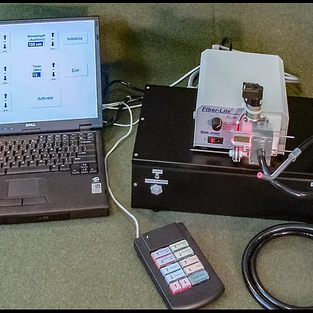History
Varichrome® Pro
History
It took almost 20 years to recognize that the responses and outcomes from the variable-wavelength therapy are "merely" the body returning to its normal functioning and improved wellness.
The years and $$ invested led to IP that may be reused. The Instant Verification System and its creating team can customize the System for internal needs and to support researchers who may wish to explore any of the unpredicted events that were recorded in real time.
The value of real-time recordings from the Instant Verification System bring added value when helping answer new questions. The data let the team quick test ideas about how the therapy might work. We'll leave it to researchers to discover how the therapy actually works. Until then, it's the body that heals itself with the help of some energy and information from the Varichrome Pro.












